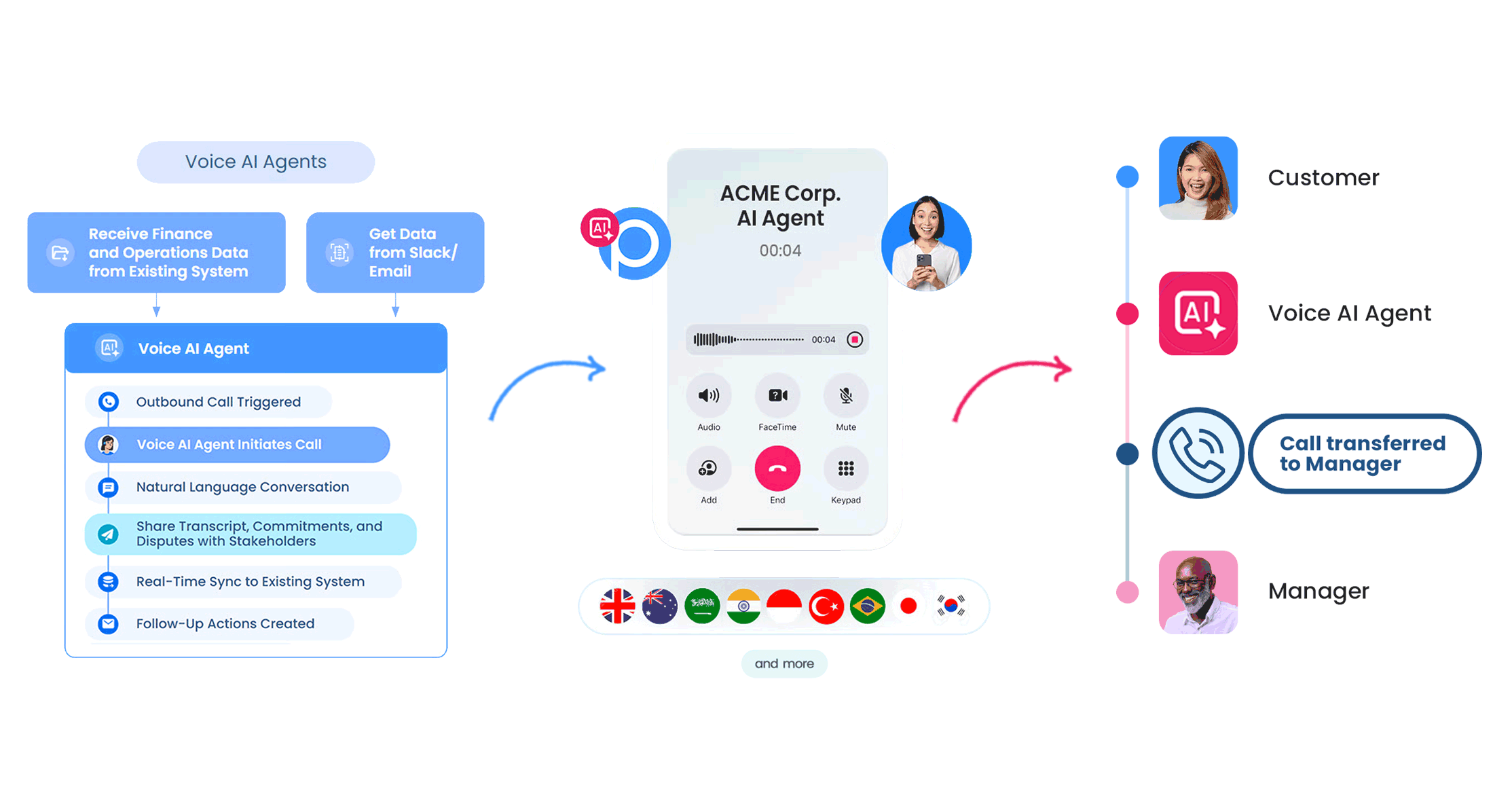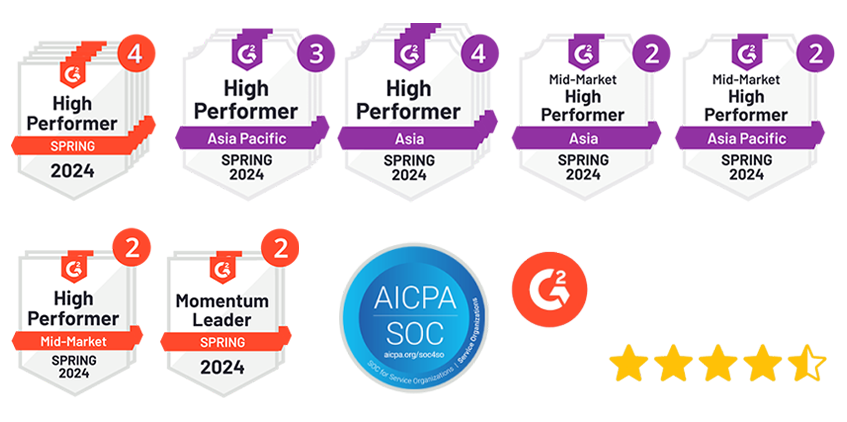Business phone communication faces a reckoning. Traditional call centers struggle with rising costs, staff turnover, and frustrated customers waiting on hold. For the first time, artificial intelligence can fully replace humans on the phone, offering a solution to these persistent challenges.
AI phone calls are rapidly becoming essential tools for businesses looking to improve customer communication. The numbers speak for themselves: 85% of customer service leaders plan to explore or pilot conversational AI solutions in 2025, according to Gartner. This isn’t just technological experimentation—it’s a strategic shift toward more efficient operations.
The business case for AI phone assistants becomes clear when you examine the economics. Recent AI model pricing reductions of up to 87% have made call automation accessible to businesses of all sizes. These systems can save teams significant time while scaling operations beyond human limitations. Gartner’s projections show that by 2029, AI will resolve 80% of common service issues without human intervention, cutting operational costs by 30%.
Customer preferences align with this shift. Nearly 69% of consumers now prefer AI-powered self-service tools for fast resolution, indicating that businesses adopting AI phone systems are meeting both operational needs and customer expectations. The question isn’t whether AI phone calls will become standard practice, but how quickly businesses can implement them effectively.
The Shift from Traditional Calls to AI Phone Systems
Traditional call centers face mounting pressures that make change inevitable. Roughly 3 million Americans work in call center jobs, handling billions of customer inquiries annually. Yet these operations struggle with a fundamental problem: nearly half of all customer service agents leave within a year due to stress and repetitive work. This high turnover creates a cycle of constant hiring, training, and knowledge loss that undermines service quality.
Why human-only call centers are becoming outdated
Customer frustration with traditional call systems has reached a breaking point. Long wait times top the list of complaints, with 55% of consumers citing this as their biggest frustration when calling businesses. Companies feel the strain too—maintaining and scaling human-powered operations becomes more expensive each year.
The numbers tell a challenging story. Call volumes continue rising steadily, and 57% of customer care leaders expect further increases over the next two years. Traditional systems can’t keep pace. Manual call assignment limits availability and drives up costs. Interactive voice response (IVR) menus—those “Press 1 for billing, Press 2 for support” systems—have become so unpopular that customers routinely try “zeroing out” to bypass them entirely.
The financial burden is substantial. Replacing a single agent costs approximately £6,125 in the UK, which means contact centers spend over £200,000 annually just maintaining staffing levels. These economics, combined with rising customer expectations, force businesses to seek better solutions.
The rise of artificial intelligence phone systems
What makes AI phone systems different? Unlike traditional Voice over Internet Protocol (VoIP) technology that still requires human intervention, modern AI solutions understand and respond to customer inquiries in natural language while solving problems independently.
Adoption is accelerating across industries. Research from Deepgram shows 82% of companies now embrace voice technology, while 78% of UK decision-makers plan to increase AI investments. The driving force behind this adoption becomes clear when you examine the operational benefits:
Reduced operating costs: Companies implementing conversational AI see up to 70% reductions in operating costs
Improved efficiency: AI handles hundreds of interactions simultaneously—impossible for human teams
24/7 availability: AI systems provide round-the-clock assistance without overtime costs
Instant scalability: AI scales instantly to handle thousands of calls without additional hardware
Real results are already emerging. One energy company reduced billing call volume by 20% and cut customer authentication time by 60 seconds through AI voice integration. These improvements transform call centers from cost centers into strategic business assets.
How AI voice agents are changing expectations
What happens when customers no longer need to navigate phone menus? AI voice agents eliminate the “Press 1 for billing, Press 2 for support” experience entirely. Conversational AI picks up on caller intent instantly, creating natural dialogue without menu navigation. This shift from rigid scripts to fluid conversation sets new service standards.
Speed becomes the defining factor in customer satisfaction. AI systems eliminate wait times through immediate automated responses and intelligent routing that directs callers to the most appropriate resources. Companies report up to 30% improvements in customer satisfaction after adopting conversational AI.
The human element remains important. Klarna’s experience replacing 700 customer service agents with AI revealed that complex issues still require human expertise. Successful implementations use AI for routine queries while escalating complex matters to human agents.
This evolution represents more than process automation. AI phone systems create entirely new business communication models that combine technological efficiency with human insight where it matters most.
How AI Phone Call Agents Work Behind the Scenes
Image Source: Research AIMultiple
Understanding how AI phone systems operate reveals the sophisticated technology that makes natural conversations possible. Each component works together to create seamless interactions that handle complex customer requests without human intervention.
Speech recognition and transcription
AI phone calls begin with automatic speech recognition (ASR) systems that capture audio and convert it into text. These systems process speech in real-time, analyzing 100-300 milliseconds of audio at a time to maintain natural conversation flow.
Modern speech recognition has evolved significantly. Google’s Chirp model, trained on millions of hours of audio data across more than 100 languages, can handle diverse accents, background noise, and conversational speech patterns with remarkable accuracy.
The process starts with audio preparation. Systems apply noise filtering and acoustic normalization to improve clarity before processing. Advanced systems then use bi-directional neural networks that analyze both preceding and following audio context to improve word prediction accuracy. This approach allows AI to understand complex requests like “I need to change my flight from Dallas to Boston on March 23rd” without requiring customers to repeat themselves.
Natural language understanding and response generation
Once speech becomes text, Natural Language Understanding (NLU) takes control. This technology analyzes transcribed text to determine caller intent and extract relevant information, going beyond simple word processing to comprehend meaning.
Most modern AI phone systems rely on Large Language Models (LLMs) trained on massive datasets. These models excel at understanding context, maintaining multi-turn conversations, and generating personalized responses. They track conversation history, allowing them to reference earlier statements without forcing customers to repeat information.
Advanced systems handle complex logic that would require extensive decision trees in traditional setups. The LLM manages conditional scenarios, resolves ambiguities, and generates natural language responses that adapt tone and complexity to match specific situations. These models often connect with business systems to retrieve customer data or access information needed to complete requests.
Text-to-speech and voice synthesis
The final stage converts AI text responses back into speech using Text-to-Speech (TTS) technology. Modern TTS systems have eliminated the robotic qualities that once made automated systems immediately recognizable.
Neural text-to-speech systems use deep neural networks to create computer voices nearly indistinguishable from human recordings. They accurately model prosody—the patterns of stress and intonation in spoken language—creating natural, fluid speech. This attention to vocal nuance significantly reduces the “talking to a robot” experience that frustrates many callers.
Advanced TTS systems can convey appropriate emotions, expressing empathy when customers are frustrated or enthusiasm when sharing positive news. Companies can create branded voices that reflect their identity while maintaining natural-sounding speech.
Voice quality directly impacts customer perception, as natural-sounding voices are rated as more trustworthy and competent. Modern systems offer pitch tuning, speaking rate adjustment, and volume control to customize the experience. Some platforms support visemes—facial positions corresponding to specific sounds—enabling virtual avatars that align speech with realistic facial movements.
These three components—speech recognition, natural language understanding, and text-to-speech—form the technological foundation that makes AI phone calls effective and natural for business communication.
What AI Phone Calls Mean for Your Business Operations
AI phone call systems deliver measurable business results that go far beyond technology adoption. Companies implementing these solutions report significant improvements across multiple areas of their operations, creating compelling reasons for businesses to make the switch.
Cost Reduction and Time Savings
The financial benefits of AI phone systems are immediate and substantial. Businesses implementing these solutions see operational cost reductions between 30 and 60% after deployment. This dramatic improvement comes primarily from labor cost optimization—while traditional call centers allocate 70% of their budget to labor, AI implementations reduce this to just 30-40%.
Speed improvements are equally impressive. AI systems complete routine tasks like appointment scheduling in under 60 seconds, compared to the 5-7 minutes human agents typically require—representing a 70% reduction in handling time. One retail business automated 65% of its peak-season calls, cutting resolution times from 8 minutes to 2 minutes while saving 120 agent-hours weekly.
Return on investment arrives quickly, with most businesses recovering implementation costs within 3-6 months. Error reduction contributes significantly to this rapid payback, as AI systems eliminate up to 50% of manual errors, improving both operational efficiency and customer satisfaction.
Enhanced Sales Performance and Customer Retention
AI phone agents excel at qualifying prospects and maintaining customer relationships. Businesses report a 60% increase in qualified sales leads through automated qualification processes, allowing sales teams to focus their efforts on high-potential opportunities.
Customer retention improves through precise timing and personalization. AI systems can follow up at exactly the right moment with tailored messages for abandoned carts, purchase confirmations, or loyalty offers, creating more effective touchpoints throughout the customer journey. The technology aligns with customer preferences, as 69% of consumers now prefer AI-powered self-service tools for quick issue resolution.
Sales teams benefit from AI-generated insights about successful techniques and customer behavior patterns. The technology identifies buying signals that human agents might miss, helping sales representatives prioritize prospects most likely to convert.
Scalable Operations Without Additional Staffing
AI phone systems enable business growth without proportional increases in headcount. A single AI agent handles the workload equivalent to dozens of human representatives, without the associated HR overhead, sick days, or training requirements. Some organizations have reduced scheduling staff requirements by up to 90% while maintaining or improving service quality.
The scalability advantages become particularly valuable during peak periods:
- 24/7 availability without overtime costs or shift scheduling
- Simultaneous call handling with one agent managing hundreds of interactions
- Instant capacity scaling without hiring delays or additional hardware
- Automatic demand adjustment responding to volume fluctuations in real-time
This flexibility allows businesses to handle sudden increases—such as 10,000 outbound calls in a single day—without advance preparation. For operations with seasonal demands or unpredictable call volumes, this eliminates the traditional trade-off between overstaffing costs and missed opportunities.
AI phone systems create an operational model where growth isn’t constrained by human resource limitations. Since every missed call potentially represents lost revenue, the financial impact of always-available AI agents is both substantial and immediate.
Which Industries Are Seeing the Biggest Impact from AI Phone Systems?
AI phone call systems are proving their value across different industries, each finding unique ways to solve specific operational challenges. Some sectors are moving faster than others, driven by urgent needs to reduce costs and improve customer experiences.
Healthcare and Insurance Operations
Healthcare providers face constant pressure from appointment scheduling, prescription refills, and insurance inquiries. AI phone systems now handle these routine tasks automatically while maintaining HIPAA compliance for sensitive patient data.
The results speak for themselves. eHealth’s AI voice agents eliminated after-hours wait times with a 100% answer rate, and nearly doubled caller interest in health plans—from 18.5% to 34.5% compared to human screeners. These improvements matter because 74% of healthcare customers willingly interact with AI assistants if it means faster service later.
Financial Services and Collections
Financial institutions deploy AI phone systems for sensitive transactions and customer communications. The global AI agents market in financial services reached $490.2 million in 2024 and projects growth to $4,485.5 million by 2030—a remarkable 45.4% annual growth rate.
Fraud detection represents the largest application, accounting for 33.4% of financial AI revenue in 2024. One retail banking corporation reduced response times by over 70% and cut human-agent calls by 50% after implementing AI-integrated customer service.
Retail and eCommerce Customer Support
Retail businesses use AI phone agents to handle order tracking, returns processing, and product inquiries with real-time inventory updates. These systems integrate directly with existing order management, CRMs, and point-of-sale systems through APIs and webhooks.
Multilingual support stands out as a key advantage—AI assistants detect and respond in over 100 languages, helping retailers serve diverse markets without hiring multilingual staff.
Travel, Hospitality, and Logistics Management
Hotels struggle with a significant problem: 40% of front desk calls go unanswered, representing lost revenue and poor guest experiences. AI voice platforms now answer these calls, handle bookings, and recommend local attractions without human involvement.
Logistics operations show even stronger adoption. Voice AI expects to reach a $50 billion market by 2030. Warehouse voice-guided systems improve picking and packing productivity by 10-35% while reducing errors by up to 25%. Multilingual voice assistants simultaneously handle thousands of customer queries about delays and deliveries, improving satisfaction by up to 30% in some companies.
Transportation efficiency improves as well, with companies reporting 20% better on-time deliveries and lower fuel costs after implementing driver voice AI systems.
How to Build Your Own AI Phone Call Assistant
Setting up an AI phone call assistant requires a systematic approach to ensure your system delivers the results your business needs. The implementation process involves several key steps that build upon each other to create an effective communication tool.
What Makes an Effective AI Phone Assistant?
The foundation of any successful AI phone call agent starts with well-crafted prompts that define your assistant’s role. Your prompts serve as the script your agent follows, so clarity matters. Rather than using robotic phrases like “State your request,” choose friendlier alternatives such as “How can I help you today?”.
Develop a detailed persona that guides all interactions. This persona should reflect your target audience’s needs, including their hopes, concerns, and decision-making patterns. A well-defined persona ensures consistent, natural conversations that resonate with callers.
Designing Conversation Pathways
Map out conversation flows before building your system. Identify the most common questions customers ask and outline different paths each interaction might take. For businesses with complex processes, consider creating specialized agents that handle different conversation segments.
Develop scripts for various scenarios:
- Initial greetings that set a welcoming tone
- Objection handling that addresses common concerns
- Call closings that leave customers satisfied
This blueprint ensures callers move logically from their initial query to successful resolution.
Connecting with Your Business Systems
Connect your AI phone call assistant with existing business tools to maximize its effectiveness. Integration with CRMs provides a complete view of each customer, allowing your system to access account history and previous interactions.
Your AI assistant should automatically:
- Log call details and outcomes
- Update customer records in real-time
- Sync conversation data across platforms
This integration eliminates manual data entry and ensures your team has accurate, up-to-date information.
Testing and Continuous Improvement
Start with a pilot implementation in a controlled environment before full deployment. Run test calls to verify accuracy and ensure responses sound natural. Testing should continue even after launch—successful AI systems improve through ongoing refinement based on real-world interactions.
Regular performance reviews help identify areas for enhancement. Monitor call outcomes, customer satisfaction scores, and system accuracy to guide improvements. This iterative approach ensures your AI phone assistant continues meeting business objectives as customer needs evolve.
AI Phone Calls Are Expanding Beyond Customer Service
AI phone systems are evolving rapidly, moving past basic customer support into new areas of business operations. Several key developments will shape how companies use this technology in the coming years.
Multilingual and International Support
Language barriers are becoming less of an obstacle for businesses using AI phone systems. These platforms can instantly identify a customer’s language and respond accordingly, making multilingual support straightforward. With support for 18+ languages becoming standard, businesses can enter new markets without hiring native speakers for their call centers.
The demand for native language support is substantial. Research shows 61% of customers prefer support in their native language, with this preference jumping to 72% when resolving complex issues. For businesses looking to expand internationally, AI phone systems eliminate the traditional staffing challenges that come with multilingual customer service.
Voice Agents for Internal Operations
AI voice agents are finding new applications within company operations. These systems now handle internal notifications for IT outages, policy changes, and event reminders. The technology helps streamline communication across departments, allowing staff to focus on higher-value work while routine information flows automatically through voice channels.
This internal application addresses a common business challenge: ensuring important information reaches the right people quickly. Voice agents can deliver personalized messages to specific team members, departments, or entire organizations without requiring manual coordination.
Data Collection and Customer Insights
AI phone systems provide valuable data collection capabilities that traditional call centers cannot match. These calls capture sentiment analysis through voice patterns and gather detailed feedback through natural conversations. Companies receive real-time analysis of call outcomes and detailed reports, creating immediate feedback loops for business improvements.
This data collection reveals customer needs, preferences, and pain points that might otherwise go unnoticed. The insights help businesses make better strategic decisions about products, services, and customer experience improvements.
Ethical and Legal Considerations
The growth of AI phone systems comes with regulatory responsibilities. The FCC has clarified that AI-generated voice calls fall under the Telephone Consumer Protection Act’s definition of robocalls, requiring proper consent mechanisms. Several states already require or encourage disclosure when customers interact with AI systems.
Companies implementing AI phone systems must navigate these evolving regulations carefully. As UNESCO notes, “in no other field is the ethical compass more relevant than in artificial intelligence”. Building ethical practices into AI phone systems from the start helps businesses avoid compliance issues while maintaining customer trust.
The regulatory environment will likely become more structured as AI phone calls become more common. Businesses should stay informed about requirements in their operating jurisdictions and build transparent practices that exceed minimum compliance standards.
Peakflo AI Voice Agent: Transforming Business Communication
At Peakflo, we’ve built AI Voice Agents designed to solve the very challenges that make traditional call centers outdated—long wait times, high operational costs, and endless staffing struggles. Unlike IVR systems that frustrate customers with menu options, Peakflo Voice Agents engage in natural conversations, instantly understanding caller intent and resolving queries in real time. They’re available 24/7, handle thousands of calls simultaneously, and scale automatically during peak demand—without adding headcount or hardware.
For finance, operations, and customer support teams, this means more than just cost savings. Peakflo Voice Agents automate routine tasks like appointment scheduling, invoice collection, sales outreach, and order tracking, freeing human teams to focus on complex, high-value conversations. Businesses adopting our solution typically see operational cost reductions of 30–60%, a resolution time cut by up to 70%, and measurable improvements in customer satisfaction.

But it doesn’t stop at efficiency. Every interaction with Peakflo Voice Agents feeds into actionable insights, giving leaders the intelligence they need to make smarter business decisions. With seamless CRM integrations, multilingual support, and compliance-first design, Peakflo ensures your AI-powered phone communication is not just fast—but also reliable, secure, and future-ready.
Ready to see how Peakflo Voice Agents can transform your customer communication? Book a demo today.
A Way Forward
AI phone calls represent a clear shift in how businesses handle customer communication. The technology addresses real challenges that have plagued call centers for years—high costs, staff turnover, and frustrated customers waiting on hold.
Companies implementing these systems report cost reductions of 30-60% while improving customer satisfaction. More importantly, AI phone systems eliminate the navigation headaches of traditional phone menus, replacing them with natural conversations that understand customer intent immediately.
The scalability advantages alone justify implementation for many businesses. AI voice agents handle multiple calls simultaneously without sick days, overtime, or training cycles. This capacity means businesses can grow their operations without proportionally expanding their workforce.
AI phone calls mark a turning point for customer communication. Businesses that implement this technology now can establish efficient operations before it becomes an industry standard. The question shifts from whether to adopt AI phone systems to how quickly you can implement them effectively.
FAQs
Q1. How will AI phone calls impact businesses by 2025?
By 2025, AI phone calls are expected to reduce operational costs by 30-60% for businesses while improving customer satisfaction. They will handle routine inquiries, scale instantly to meet demand, and provide valuable data insights, allowing companies to grow without proportionally increasing headcount.
Q2. Are AI phone systems replacing human customer service agents?
While AI is not completely replacing human agents, it is taking over a significant portion of customer service interactions. Gartner predicts that by 2025, 85% of customer service leaders will explore or pilot AI solutions, with the technology expected to handle up to 95% of call center interactions.
Q3. How do AI phone call systems work?
AI phone call systems use speech recognition to convert voice to text, natural language processing to understand intent, and text-to-speech technology to respond. They can handle multiple calls simultaneously, understand context, and integrate with business systems to provide personalized responses.
Q4. Which industries are leading in AI phone call adoption?
Healthcare, finance, retail, and travel industries are at the forefront of AI phone call adoption. These sectors are using AI to handle appointments, detect fraud, process orders, and provide multilingual support, resulting in significant improvements in efficiency and customer satisfaction.
Q5. What are the ethical considerations for using AI in phone calls?
Ethical considerations include proper disclosure of AI use, obtaining consent, protecting customer data, and ensuring fairness in AI decision-making. Companies must navigate evolving regulations, such as the Telephone Consumer Protection Act, and adhere to ethical guidelines to maintain trust and compliance.










![Why AI Sales Calls Are Making Good Sales Reps Even Better [2025 Guide] ai sales calls](https://blog.peakflo.co/wp-content/uploads/2025/09/65168cf6-3001-4733-8cbc-12d5684cf449-218x150.webp)


































